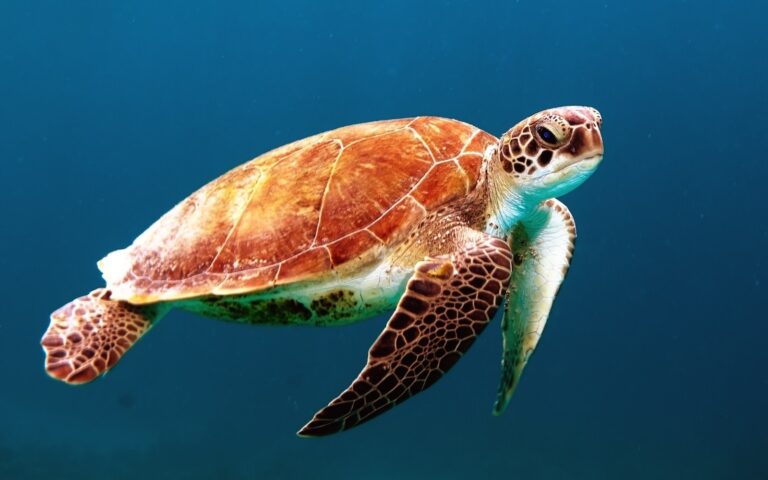While not a lot is known about turtle (and tortoise, too) sex, it is generally agreed that their penises are impressively large. Indeed, some have been reported to be over half the size of the turtle.
Similar to a mammal’s, a turtle’s penis is an erect hydraulic cylinder that becomes engorged with fluid when inflated.
It’s shaped like a cylinder
When a turtle is flaccid, its penis looks like a cylinder with long seminal grooves. When it becomes erect, the structure rises more than four inches and extends past the rear of the shell. In this state, the sex organ is called a “glans.” The glans are shaped differently in different turtle species.
Despite their seemingly simple form, the penises of turtles and tortoises are quite complex. They are located in a space inside the tail base called the cloaca, which is shared by the reptile’s digestive and reproductive systems. The cloaca permits sexual intercourse, egg laying and the excretion of wastes. The penis of male green turtles may reach 30 centimeters in length, and a hook at the tip of the glans likely aids in sperm transmission.
The glans of a turtle are lined with alternating bright and dark bands, which are visible in polarized light. These alternating bands result from the crimping of collagen fibers in flaccid tissue and are lost in erect tissue. The morphology of penile wall tissue varies between turtle species, and is similar to that of mammals.
Despite the fact that turtles have a penis, they don’t have balls, like we do. Their testicles are concealed under their tails, but swell up during mating. This enables them to mount their female companions and insert the penis into the female’s cloaca.
It’s purple
While a turtle penis may seem bizarre and humorous to us, it’s important to remember that these structures are essential for the survival of this species. They have evolved as a result of sexual selection, a process where certain physical characteristics evolve because they improve an organism’s chances of mating and reproducing. The color of the penis varies depending on the type of turtle, but it typically ranges from gray to purple.
Unlike mammals, which have their penises confined inside the body, turtles display theirs openly. This is because their glans, or sphincter sacs, have the ability to move and open and close in a ‘flower-like’ fashion. These features, along with the ridges and sinuses around the head of the glans, give the organ a rather alien-like appearance.
When a male turtle is inactive, it doubles over and rests within its cloaca. But when it is receptive to sex, the phallus becomes erect and bulges out of its cloaca. Its length can increase by up to 50%, and its width by 75%.
After a male has inflated its phallus, it moves forward to meet a female. It then flutters its front limbs to show off its long claws, which are signs of male chauvinism. The male will then smell the female’s cloacal opening, which is her vagina. She will then tuck her tail into place to allow the male to enter her cloaca.
It’s curved
It may seem bizarre, but a turtle penis is actually quite normal. This unusual organ is a hydraulic structure that can easily inflate or deflate when a male turtle prepares to mate with its female counterpart. During copulation, the sex organ helps transfer sperm to the female turtle’s cloaca. The penis can be as long as half the length of a turtle’s body, but it’s usually shorter.
In addition to the curved shape of the organ, it has a purplish head that throbs when it’s working. The head is covered in glands that open and close to eject sperm. The penis also has a long seminal seam that runs from the base to its glans head. The openly displayed seam is different from the one found in mammals, which have the seam confined within their penises.
In terms of size, a turtle penis is similar to the genitals of most mammals. It is a hydraulic cylinder that enlarges when there is an influx of blood rushing towards it. Depending on the species variety, the length of a turtle’s penis can vary from a few centimeters to over 30 cm. Its curved shape allows it to easily penetrate the female’s cloaca. During copulation, turtles typically mount their female counterparts and use their tail to push the penis inside her.
It’s big
The turtle penis, also called a hemipenis, is an elongated organ located in the cloaca of the male turtle. The genitals may prolapse out of the vent (the opening on the underside of the tail through which the turtle passes droppings) when the animal is stressed or acting sexually, but they usually return to their shells easily. The hemipenis is a dark-colored structure, and it has glans that take up stimulative motion after they’re erected. The glans are equipped with seminal grooves and a long seam that runs from the base of the organ to the tip.
Like mammalian penises, the turtle penis is a hydraulic cylinder that expands when it’s erect. Its length can increase by 50 percent and its width by 75 percent, Scientific American reports.
The elongated phallus of the turtle is a testament to evolution’s role in shaping physical characteristics that improve mating opportunities. It’s not unusual for species to develop distinct penises, especially those in environments that are hostile to sexual reproduction.
It’s possible that the large phallus is an evolutionary throwback to Cretaceous sea turtles with much longer tails than today’s species. In any case, it’s a striking feature that can intimidate predators or rival males. Male turtles can often be seen with their erect hemipenis sticking out of their shells while they sleep.
See Also:



